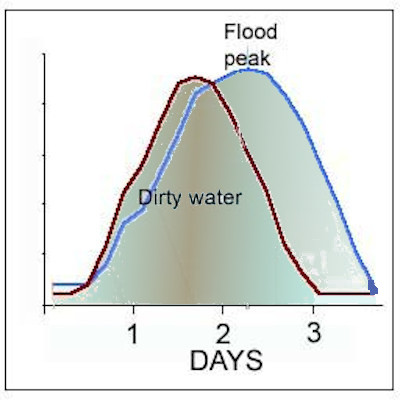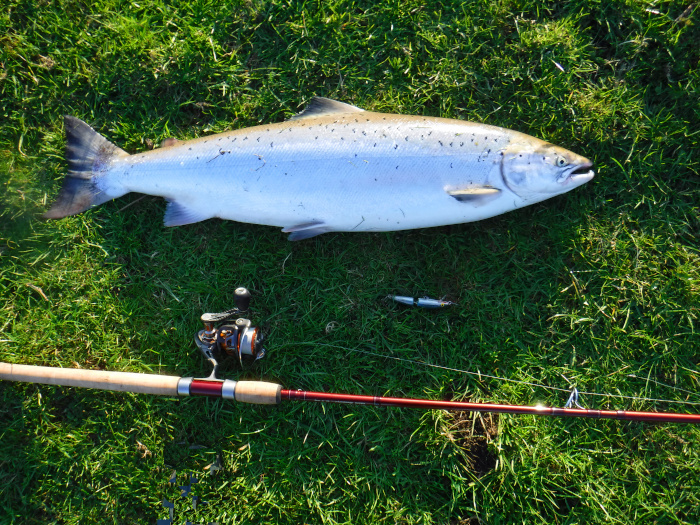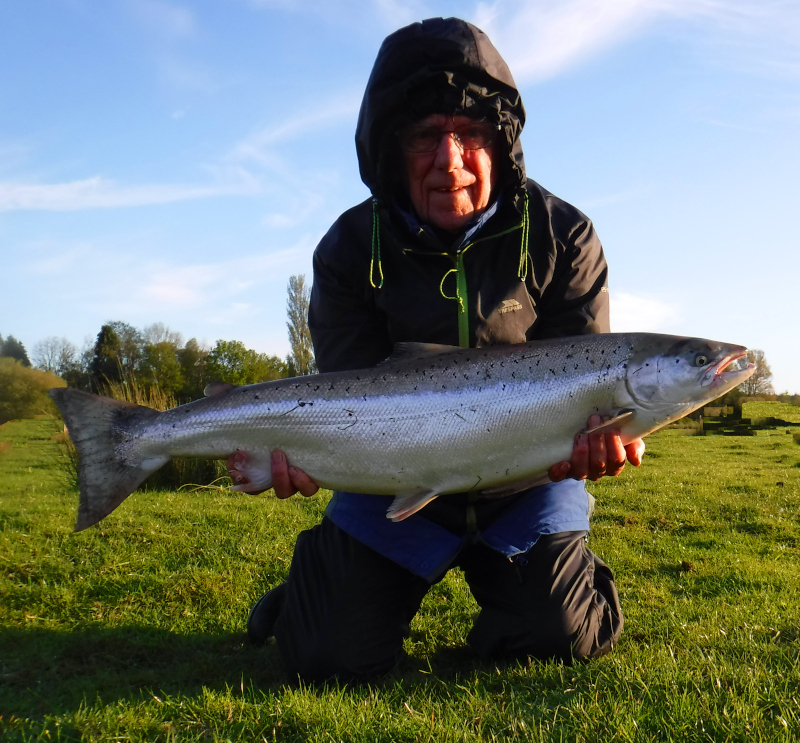

Catch Fish with
Mike Ladle
Information Page
Freshwater Fishing
For anyone unfamiliar with the site always check the FRESHWATER, SALTWATER and TACK-TICS pages. The Saltwater page now extends back as a record of over several years of (mostly) sea fishing and may be a useful guide as to when to fish. The Freshwater stuff is also up to date now. I keep adding to both. These pages are effectively my diary and the latest will usually be about fishing in the previous day or two. As you see I also add the odd piece from my friends and correspondents if I've not been doing much. The Tactics pages which are chiefly 'how I do it' plus a bit of science are also updated regularly and (I think) worth a read (the earlier ones are mostly tackle and 'how to do it' stuff).
Not quite what I was after.
It is now the time of year when (from the 16th of May) I'm allowed to spin for seatrout in my local rivers. I've been to the river on three or four occasions but conditions were far from perfect. Although most of the flow normally consists of ground water from the chalk aquifer, when it rains heavily surface run off introduces a lot of yellow-brown-grey muck from fields and roads. Normally the water will rise and colour up within perhaps twenty four hours and then, just as quickly start to clear again. However, for a couple of weeks it has rained other day, and though levels have not risen too much the water has never really cleared at all.
Anyway, every time I tried to fish I found that my little lure was invisible even a few centimetres below the surface and, after each short session I packed in and went home - disappointed. I kept an eye on the weather forecasts but it must have been a week or so before there were a couple of dryish days on the trot. The air temperatures had not risen much so, even though it was quite sunny, there was a chilly breeze and when I set off I was dressed in my semi-cold weather kit (I'm getting old and feel the cold). Eventually I arrived on the river bank to find that the plug was visible perhaps 40cm down - much better. I decided to start at the top end of the stretch and work my way downstream, fishing down and across as I went.
I searched the water, stopping every few metres for a couple of casts. At each halt the first one was fairly square across to the far bank and then each one was longer, trying as far as possible to drop the plug under the far bank. On the shorter casts the lure swung across fairly quickly but on the longest ones it could be a minute or more before it reached my bank and I had to begin the slow retrieve. More than an hour had passed with nothing doing and I was beginning to think about packing in. However, near the bottom of the stretch was a bridge and the river made a fairly sharp right turn perhaps twenty metres upstream of it. On the far bank was a large willow bush, almost a tree (I lost a plug in it two years ago), overhanging the water and in the past it has provided cover for decent seatrout.
I Made my second cast a long one and it landed in the slack a little way upstream of the willow tree. Holding the rod up I watched the line swing slowly across as the little plug wiggled its way towards the near bank. In mid-river there was a savage yank, the rod bowed over and the clutch screeched sharply. I was in. I'm thinking could it be a pike? Almost at once I decided that it was much too lively, but it showed no sign of jumping and tore away downstream towards the bridge. Salmon! That seemed the most likely. I applied as much pressure as I could to try and prevent the fish going through the bridge, but suddenly the line went slack. Had it come unstuck? I wound quickly and within seconds the line tightened and I realised that the fish had turned and swum back upstream towards me. Now I could feel it pulling and was sure that it must be a salmon. As it swam past I caught a glimpse of a broad grey back, and despite heavy pressure from my end it simply swam on upstream against the flow. Now it was close under my side of the river and heading for some hawthorn bushes and reeds hanging from the near bank. I dropped the rod tip to the water surface and heaved it back but it ploughed on under the nasty looking vegetation. Four times it made strong upstream runs but was brought out into mid river and eased back down towards where I stood.
The fish was clearly tiring now and it turned so that I could see the depth of its silver flank. The plug was hooked into the far side of its mouth and I wasn't sure how secure the hook-hold might be. I eased up a little and allowed it to make a few more short runs against the clutch as I reached down to pick up my net laying on the ground. The net didn't look very big against the bulk of the fish. At the first attempt I had two-thirds of the salmon's body over the rim but it managed to slide back out before I could lift it. Two or three more minutes of swimming about and I tried again. This time the entire fish was in and I dragged net and salmon onto the damp grass. Phew!
At this point the hooks snagged in the net mesh and the fish came free, so I put the rod beside it and took the camera out of my pocket for a picture. Set the timer and take a quick selfy before returning it to the river. After a minute or two away it swam. Not the desired seatrout but fantastic nonetheless! I walked back to the car well pleased - at least (and at last) I'd caught something.
Typical pattern of rising water levels and turbidity. It never got close to the day-three state for a week.

What a beautiful sight a big spring salmon is.

Both of us ready to return.

If you have any comments or questions about fish, methods, tactics or 'what have you!' get in touch with me by sending an E-MAIL to - docladle@hotmail.com